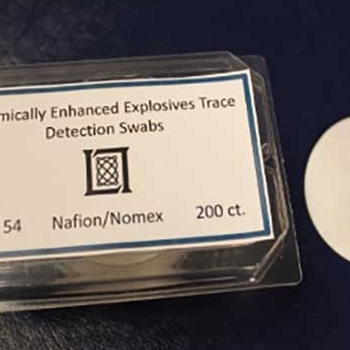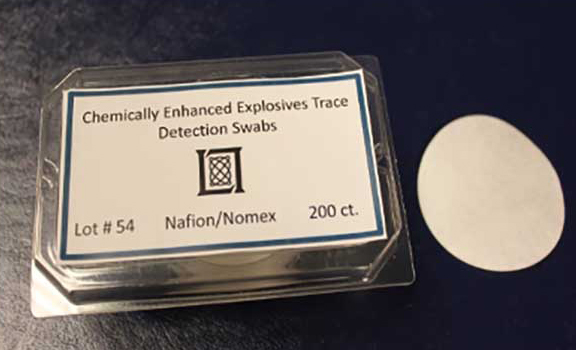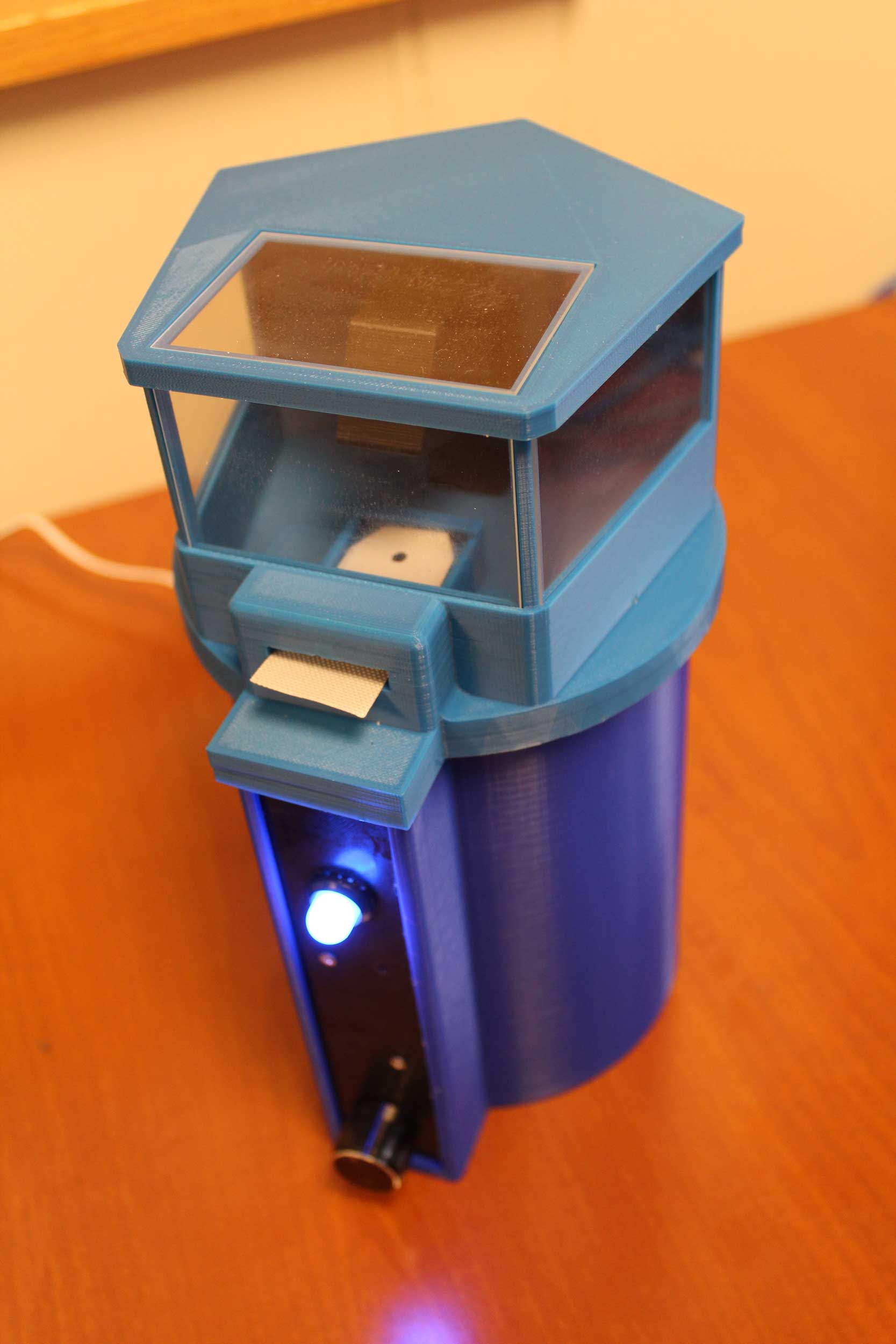Chemically Modified Swabs for Improving Explosive Trace Detection

Lincoln Laboratory has developed a swab for improved trace detection of inorganic chlorate and perchlorate salts used in two-component (fuel and oxidizer) explosive mixtures. This new chemically treated swab allows security personnel to quickly screen items such as baggage, packages, clothing, and automobiles for trace residue left by people who have handled these types of explosives. The swab works when its acidic coating is activated by moisture to turn those low-vapor pressure salts into highly volatile chloric and perchloric acid vapors, which are easily detected.

Background
The detection of homemade explosives, and their builders, is a Department of Homeland Security priority. Internet-enabled, wide-ranging access to "recipes" for making explosives from commonly available materials has increased the threat of both planned and inadvertent damage from these unstable devices. Public safety organizations routinely screen people, packages, vehicles, luggage, and other items for minute residues of the two inorganic salts, chlorate and percholorate, most often used in homemade explosives.
The typical screening method involves swabbing the surface of an item to collect particles of explosive materials adhered to it, then inserting the swab into an instrument for analysis. Many of these instruments rely on vaporization to provide a medium for analysis. The results, produced within seconds, indicate the presence of vapors of suspect compounds and may also identify the general types of compounds detected.
Lincoln Laboratory Innovation

Detecting the inorganic salts commonly used in homemade explosives is challenging for systems reliant on analyzing the salts in vapor form. Because chlorate and percholorate have low vapor pressure, they emit a low concentration of their particulates in vapor form. The higher the vapor pressure of an explosives compound, the higher the ambient concentration of the compound in vapor form. The chemically treated Lincoln Laboratory swab acidifies inorganic salts exposed to moisture to increase these salts' vapor pressure to levels easily detected. A custom co-located hydrator, inexpensively 3D printed, activates this process.
The research team worked with Transportation Security Administration officers at Boston Logan International Airport to conduct three operational tests of the swab/hydrator technology at passenger screening checkpoints and in baggage handling areas. The system demonstrated the efficacy of this process in detecting trace and small bulk inorganic salts at acceptable false-alarm rates. The swab/hydrator system can be cost-effectively manufactured and used with existing hardware and software, potentially aiding the transition to commercial production and wide agency adoption.
Benefits
- Chemical composition of swab is compatible with explosive trace detection analyzers already in use at airports, transportation centers, or other venues
- Swab samples can be analyzed within seconds and without any sample preparation
- The polymer coated onto the swab is not constrained to use on a specific platform
- Compact, co-located hydrator for salt-to-vapor conversion can be cost-effectively 3D printed
- Tests showed the swab achieves a high probability of detection with low false-alarm rate
Additional Resources
U.S. Patents 9,588,095; 9,891,193; 10,345,281; 10,816,530; and 11,237,143